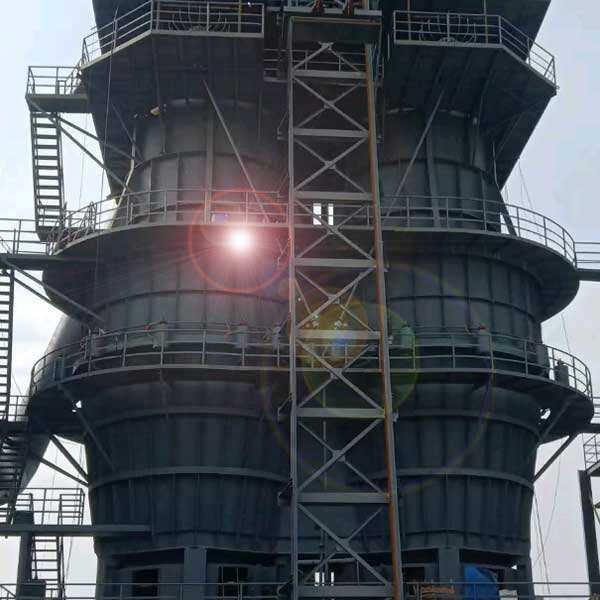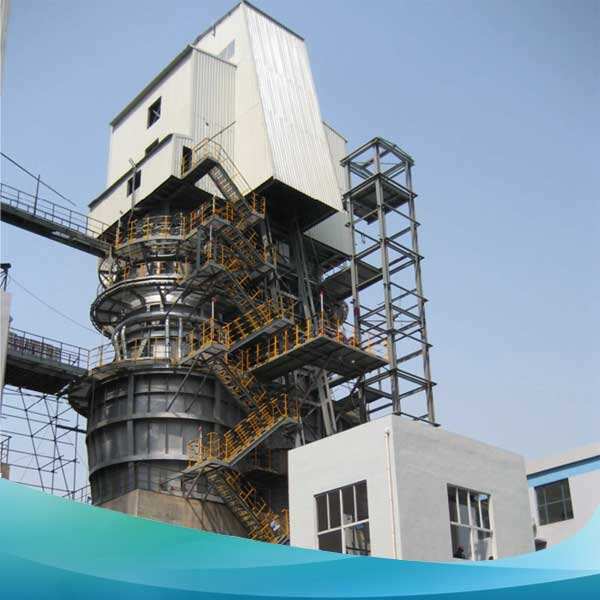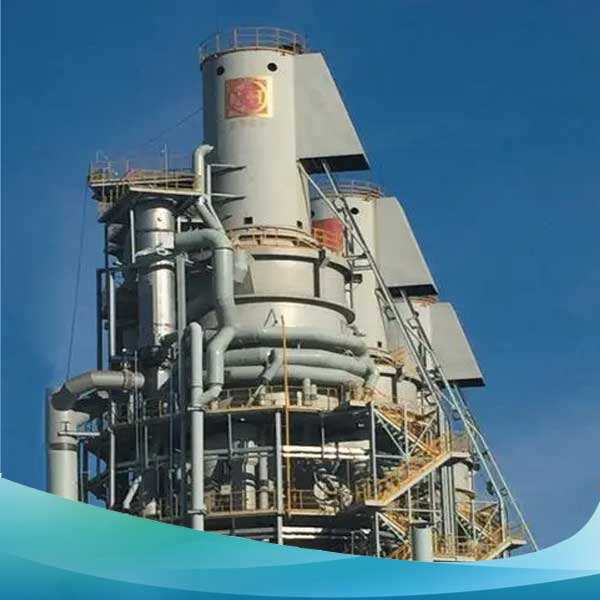Obrotowy piec: Proces produkcji cementu. Będzie to praktyczne spojrzenie na proces zaangażowany w produkcję cementu oraz sposób, w jaki piecy obrotowe są wykorzystywane do jego produkcji. Piec obrotowy jest dużym urządzeniem mechanicznym całej linii produkcyjnej i głęboko wpływa na różne dziedziny przemysłowe. Wyobraź sobie ogromne, supergorące piekarniki, które mogą wykonywać wiele niesamowicie przydatnych zadań. Podczas wirowania wokół swojej osi te cylindryczne maszyny wykorzystują swoje ruchy, aby przekształcać podstawowe materiały w złożone komponenty. Przemysłowe piecy obrotowe mogą wykonywać szereg zadań, od suszenia minerali po przetwarzanie ogromnych ilości odpadów, co czyni je niezwykle różnorodnymi i przydatnymi. Jedną z najważniejszych różnic między nowoczesnymi piecami obrotowymi a starszymi modelami jest to, że mogą one dokonywać bardzo drobnych zmian w swojej prędkości obrotowej. Oznacza to, że za pomocą przekładni o prędkości zmienniej twój piec łączy transfer ciepła i wymaga odpowiedniego czasu przetwarzania materiałów, aby ukończyć ich obróbkę termiczną. Ponadto systemy chłodzenia obudowy mogą dalej ulżyć stresowi termicznemu, co pozwala na dłuższe życie Twojego sprzętu, a ultrawydajne systemy spalania z podwójnym ogniwem mogą zmniejszyć emisje. Pozwala to na dalsze optymalizacje efektywności operacyjnej dzięki dużo dokładniejszym dynamicznym dostosowaniom opartym na zaawansowanych systemach kontroli z monitorowaniem w czasie rzeczywistym i analizą danych.
W naszych czasach obrotowe pieca stały się jednymi z kluczowych narzędzi wspomagających zrównoważone praktyki przemysłowe i produkcyjne. Współczesne urządzenia do kontrolowania zanieczyszczeń, takie jak wydestylatory i filtry, są stosowane w tych piecach, aby zminimalizować szkodliwe emisje. Ponadto, obrotowe pieca mogą być napędzane alternatywnymi paliwami, takimi jak paliwa uzyskiwane z odpadów, co zmniejsza zależność od paliw kopalnych i oferuje przyjazną środowisku metodę eliminacji odpadów. kalcyacja wapnia Rekuperacja tego, co można sklasyfikować jako ciepło odpadowe, osiągnięta poprzez redukcję emisji węglowodorów (prawdopodobnie łącznej energii), staje się bardziej proaktywnie efektywna, umożliwiając niektórym systemom przywrócenie funkcjonalności przynajmniej częściowo.
Walec obrotowy jest wykorzystywany przez dziesiątki branż ze względu na swoją uniwersalność. Istotnie, są one stosowane w modernizacji linii produkcyjnych od 1.000 ton/godziny i więcej, a także używane są łóżka fluidalne do odzysku kamieni. W zarządzaniu odpadami, inkineratory są wykorzystywane do przetwarzania i eliminacji odpadów niebezpiecznych, medycznych oraz komunalnych śmieci stałych... Walce obrotowe są stosowane do realizacji procesów takich jak wstępne przygotowanie karm dla zwierząt, suszenie węgla aktywnego oraz oksydacja osadów ściekowych; są również wykorzystywane do topienia różnych składników chemicznych w przemyśle metalurgicznym. Prawdziwa elastyczność walca obrotowego determinuje ich zastosowanie w tak wielu aplikacjach w celu uzyskania pożądanych procesów.
Kontrola temperatury materiału może być kluczowym aspektem w obsłudze pieca obrotowego, jak dobrze możesz wiedzieć z obsługi kontroli suszarki. Temperatura wpływa zarówno na tempo reakcji chemicznej (przetwarzanie termiczne), jak i na zmiany właściwości fizycznych (suszenie). W procesach cementowych / wypalania oraz innych, jest niezbędne utrzymanie odpowiednich temperatur, aby produkty były lepszej jakości. Pensalab dysponuje nowymi technologiami profilowania termicznego powiązanymi z inteligentnym podziałem stref oraz umiejscowieniem grzałek, które zapewniają stałe rozprowadzanie ciepła przez całą długość pieca. Ponieważ kontroluje ono dostawę paliwa, przepływ powietrza i ogrzewanie, ten sposób nie prowadzi do marnotrawstwa energii, takiego jak w niektórych błędnych procedurach, gdzie temperatura spada poniżej 0 lub przekracza maksymalną, np. dla nierdzewnej stali, co mogłoby prowadzić do degradacji spowodowanej wysokimi temperaturami.
Specjalnie zaprojektowane obrotowe piecownie odgrywają istotną rolę w właściwej obróbce materiałów. Wszystkie te rozwiązania są projektowane z uwzględnieniem właściwości materiału surowcowego i odpowiedniej pojemności produkcyjnej. Jedna z oferowanych konstrukcji modułowych umożliwia łatwe instalowanie i ulepszanie, a także poprawne określone specyfikacje wyposażenia, które gwarantują trwałe wyniki nawet w najtrudniejszych warunkach procesowych. Posiadanie funkcjonalności, jaką oferuje pewien rodzaj dostosowania, prawie na pewno jest warte dodatkowego opłaty za zarządzanie, ponieważ nie tylko umożliwia większą automatyzację, ale również oszczędza na kosztach konserwacji dzięki tak niskim oprom cechom - co jest niezaprzeczalnym zyskiem dla osiągnięcia korzystnego ROI.
Więc, na końcu, udowodniono, że pieca obrotowe są tym, co odpowiada serii wymagań zarówno przemysłu, jak i ochrony środowiska. Ponieważ mogą obsługiwać szeroki zakres zastosowań przemysłowych oraz klientów, którzy wymagają kontroli wysokich temperatur, wraz z funkcjami obróbki materiałów zapewniającymi niekompromitujący poziom wydajności, ich wartość będzie trwała długo w szybko ewoluującym okresie zaawansowanej technologii w przemyśle. W miarę jak przemysły coraz bardziej przechodzą ku zrównoważonej rozwojowej, pieca obrotowe pozostaną najbardziej zaawansowaną technologią zapewniającą Zieloną przyszłość.
Dostarczanie wartości dla wielu różnych metod działania i projektowania, te rozwiązani 'zamodernizowały serce każdego starszego obrotowego pieca' pod względem jego procesu lub skupienia na produkcie. Prędkość obrotowa bębna jest lepiej kontrolowana dzięki napędom o zmiennej prędkości, które mają precyzyjne dostosowywanie maksymalizujące czas pobytu transferu ciepła. Układy chłodzenia w obudowie pomagają zmniejszyć termiczną naprężenie i przedłużają czas użytkowania urządzenia. Nowsze piecyki podobnie mają najnowsze układy spalania dla optymalnego zaopatrzenia energetycznego i mogą, od pięciu do ośmiu razy w roku, zmieniać skład podstawowego paliwa tak, że emisje gwałtownie spadają. Monitorowanie w czasie rzeczywistym z analizą danych zapewnia, że niezmieniona uwaga jest poświęcona każdemu elementowi konstrukcji, blokując operacje dla dokładnego zarządzania procesem i dokonując korekt gdy zmieniają się zmienne, utrzymując warunki w ich najlepszym stanie.

W ewoluowanej naturze obrotowego pieca w współczesnym życiu, nie chodzi już tyle o możliwości, ile raczej o nieunikniony przesunięciu po zrównoważonej rozwoju, które dało początek nowym wersjom tej technologii. Emisja szkodliwych cząstek i gazów z tych technologii jest istotnie ograniczana poprzez wyposażenie systemów w nowoczesne produkcja wapna mierniki kontroli zanieczyszczeń, takie jak wydestylatory i filtry. Ponadto, kolejnym powtarzającym się rozwiązaniem zmniejszenia zależności od paliw kopalnych jest ich zdolność do działania na alternatywnych paliwach - nawet tych, które mają odpady jako surowiec - co sprawia, że staje się to odpowiednim sposobem radzenia sobie ze śmieciem. Dodatkowe zużycie energii może być oszczędzone dzięki systemom odzysku ciepła, które przechwytują marnowane ciepło z systemu i ponownie kierują je do procesu, co redukuje ogólny tropnik węglowy wraz z oszczędnościami energii.

Jak wspomniano wcześniej, najlepszą rzeczą w obrotnych piecach procesowych jest fakt, że mogą być wykorzystywane w wielu przemyłach i zastosowaniach. Stanowią one integralną część procesów górniczych na małą i dużą skalę, w tym kroki separacji na miejscu, które są kluczowe dla oświetlonych żelaznych szyb. W kontekście zarządzania odpadami są potrzebne do bezpiecznego traktowania odpadów niebezpiecznych (wypalanie / spalanie), medycznych (sterylizacja lub mikrofalowanie) i odpadów stałych komunalnych. W przemyśle spożywczym i rolnictwie mogą być wykorzystywane do przetwarzania produktów takich jak karmy dla zwierząt lub nawozy; podczas gdy w sektorze chemicznym wykorzystuje się je do przeprowadzania różnych reakcji. Obrotowy piec wapny Rozmaite funkcje, jakie spełnia obrotowy piec procesowy, czynią go niezbędnym elementem w licznych zastosowaniach przemysłowych.

Kontrola pola temperatury w obrotowym piecu może dobrze spełniać te dwa wymagania i jest bezpośrednio związana z zmianą chemiczną, która wpływa na właściwości fizyczne. Kontrola zmiennych procesowych jest również kluczowa, ponieważ właściwości oparte na temperaturze są osiągane podczas produkcji większości produktów, takich jak cement, klinker i spaliny. Stabilny przepływ ciepła uzyskuje się od jednego końca pieca do drugiego dzięki szczegółowemu podziale i pozycjonowaniu elementów grzejnych za pomocą zaawansowanego profilowania termicznego wykorzystującego najnowsze technologie. Na taśmie znajduje się automatyczna kontrola temperatury z niskim zużyciem energii, ponieważ podczas obróbki może wystąpić przegrzanie oraz proporcjonalne dostarczanie paliwa lub przepływu powietrza, które są regulowane w czasie rzeczywistym (przez wentylator sterowany feedbackiem), a także bezpośredni нагрев, opcjonalnie pośredni, aby zapobiec degradacji.
ponad 20 lat, dedykujemy się rozwojowi, badaniom i instalacji obrotowych pieców wapienniczych. Jest pełen automatyczny z najniższym kosztem inwestycyjnym. Wapiennica ma przedłużony okres użytkowania, możemy być uznani za godnych zaufania dzięki doskonałej obsłudze i wysokiej jakości młotce wapiennemu.
Firma zajmuje się przede wszystkim inżynierią programową, projektem, instalacją i uruchamianiem pieców oraz pieców produkcyjnych, osiągając energetycznie efektywny, ekologiczny wapieniowiec typu szachtowego. Firma zbudowała aktywne wapieniowce w różnych rozmiarach, w tym 150m3, 170m3, 200m3, 250m3, 350m3, 500m3 itd. Piecowe zostały pomyślnie uruchomione i wytworzyły spektakularny efekt! Korzystając z najnowszej technologii wapieniowca z koksownią, wapieniowiec gazowy został zaprojektowany jako wapieniowiec obrotowy, a umowy na projektowanie zostały podpisane z wieloma firmami.
Od dawna firma AGICO dysponuje profesjonalnym zespołem technicznym, dojrzałą technologią produkcyjną oraz bogatym doświadczeniem w produkcji, tworząc kompletny system zarządzania technologicznego dla pieców szachowych. Udoskonalono technologię oszczędnej energetycznie i ochronnej dla środowiska wapienia w piecach obrotowych. Ta technologia charakteryzuje się niskimi kosztami inwestycyjnymi, wysoką jakością automatyzacji, wybitną jakością produktu, niskim zużyciem energii oraz dłuższą żywotnością pieca. Została powszechnie zastosowana w przemyśle metalurgicznym, nieferlowym, chemicznym, metali, materiałów budowlanych oraz innych sektorach, takich jak głęboka przetwarzanie itp.
Firma AGICO posiada wysoko kwalifikowany zespół techniczny specjalizujący się w projektach klucz pod klucz (EPC), które obejmują produkcję, projektowanie, instalację, debugowanie, konserwację oraz inne usługi. Oferta obejmuje kompleksowe wsparcie przedsprzedażowe, sprzedazowe i postraszalowe, zapewniając niezbędną pomoc techniczną w celu spełnienia wymagań klientów.